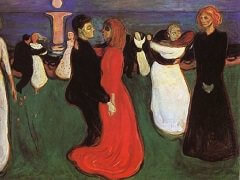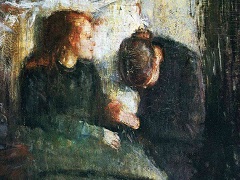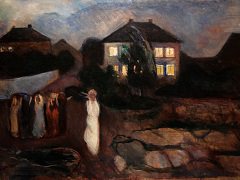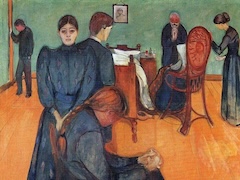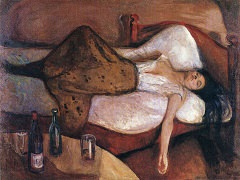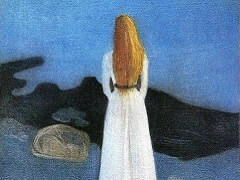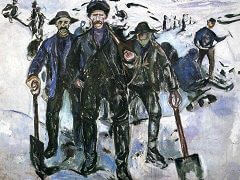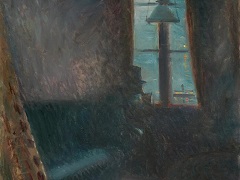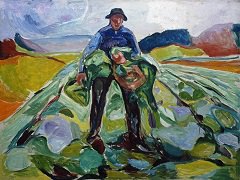Evening on Karl Johan Street, 1892 by Edvard Munch
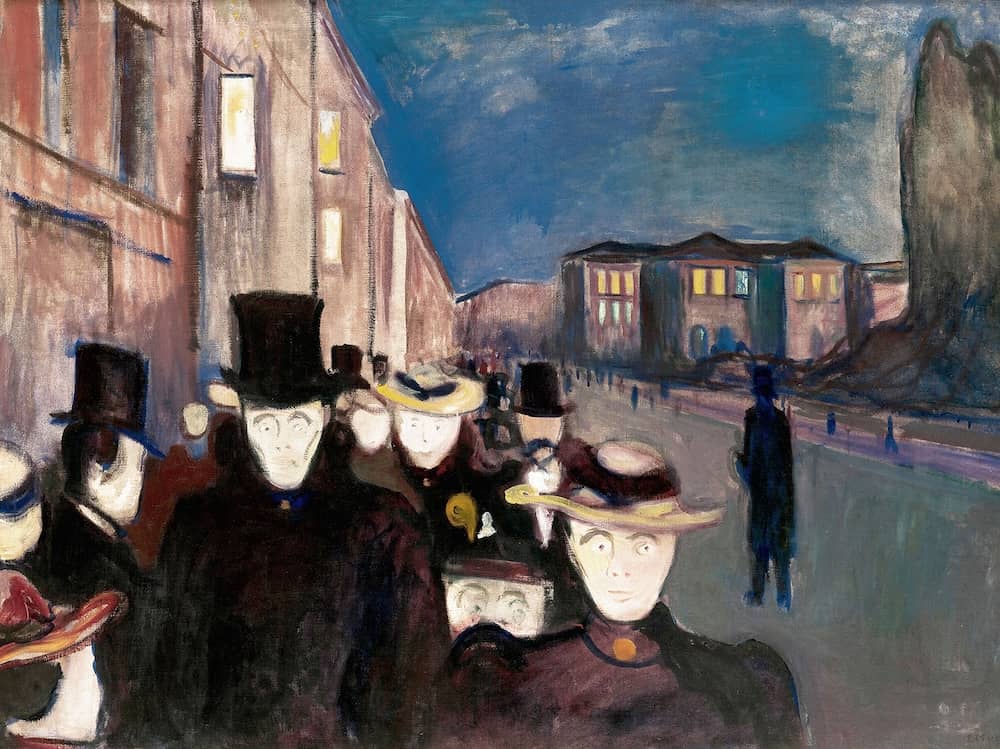
The 'cropping' techniques of Edgar Degas, Japanese prints, and photography, provide Munch with a method of intimating threat and unease, as the vacant, pitiless gazes of the bourgeois strollers bear down on the viewer. The mood of nocturnal catalepsy comes from Munch's experience as he waited for a mistress to meet him: 'She greeted him with a soft smile and walked on ... Everything became so empty and he felt so alone ... People who passed by looked so strange and awkward and he felt as if they looked at him, stared at him, all these faces pale in the evening light.' Compared with The Scream, however, this work is still more symbolist than expressionist - the raw power of the latter hidden under the great beauty of the blue night sky and the glowing lamps, a velvet surface disguising the terror.
The single figure moving against the flow and walking in the middle of the street, evokes Munch's own situation as a 'bohemian' and radical artist, hounded by the middle-class authorities in the stifling parochialism of Christiania, in contrast with the larger world of Berlin, Paris and beyond for which he was yearning. Munch's mastery of symbolism, however, ensures that these personal interpretations do not intrude on the vision of universal anguish and every individual's fear of the mindless crowd.



